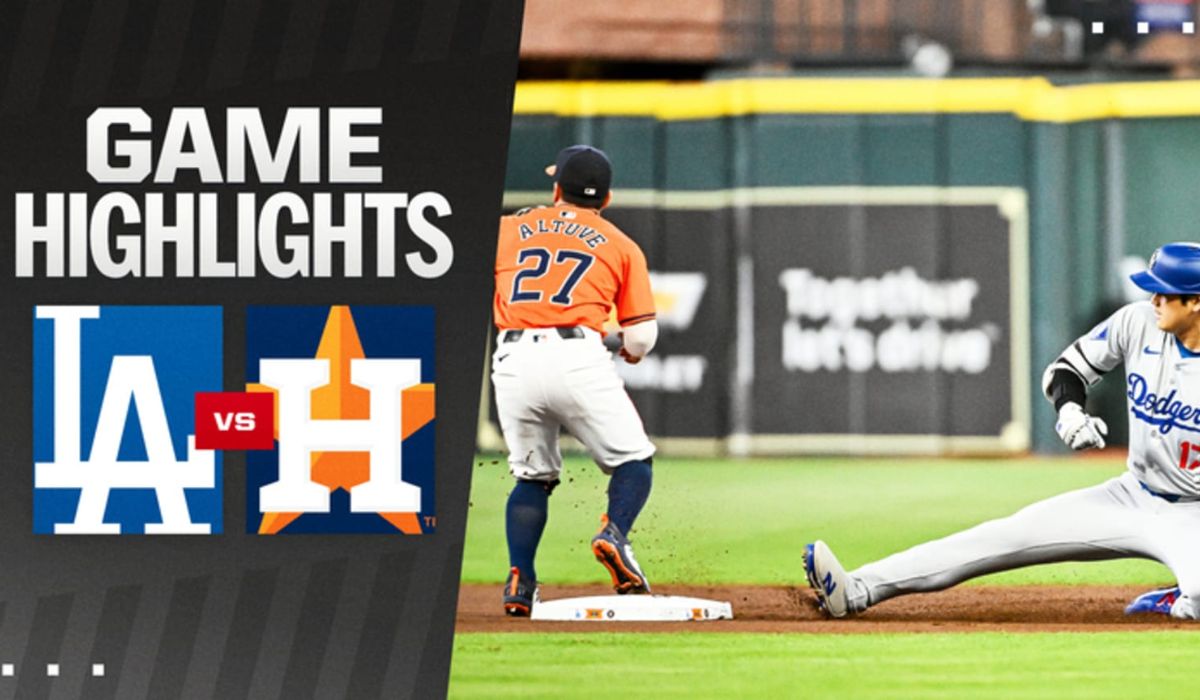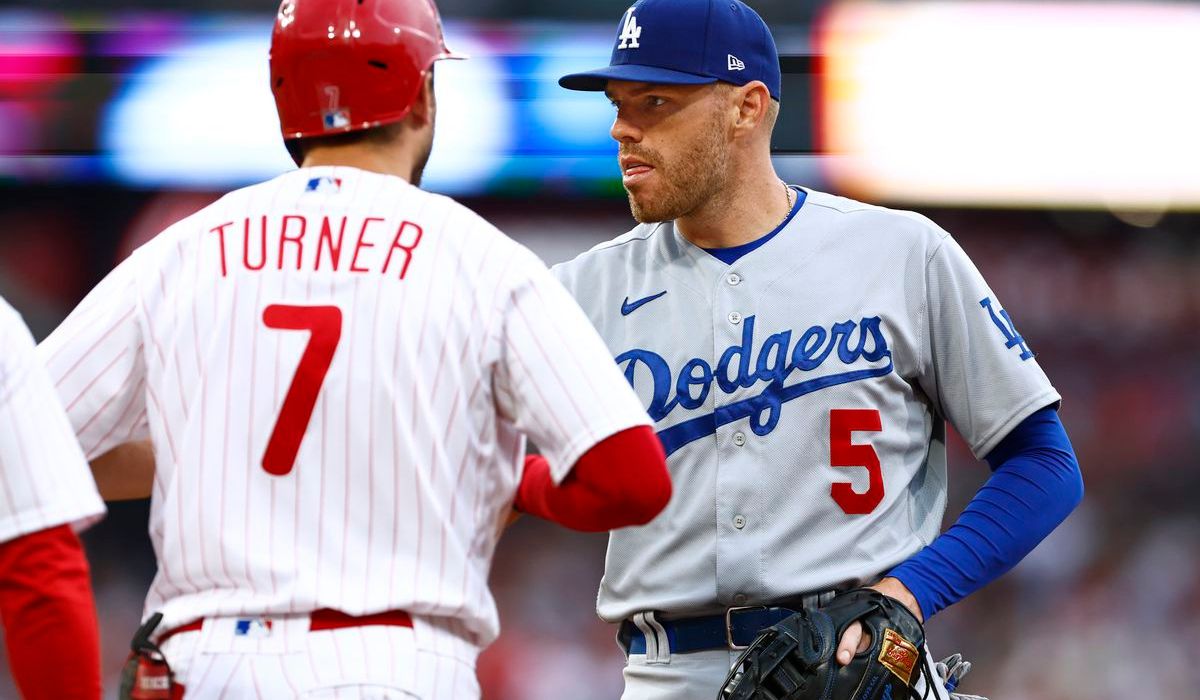Key Player Stats from the Dodgers vs Astros Match: A Detailed Breakdown
In every high-stakes game like the Dodgers vs Astros match, individual player performances often shine through as key factors influencing the outcome. Let’s take a closer look at the standout players and their stats.
His control and ability to minimize damage during key moments were crucial in containing the Astros’ powerful lineup.
For the Astros, José Altuve stood out with his quick bat speed and ability to get on base. Altuve’s aggressive hitting style often saw him on base, either via a walk or a hit, giving the Astros key opportunities to score. Meanwhile, Kyle Tucker showcased his power, hitting a home run that helped the Astros stay in the game.
Pitcher Framber Valdez was another standout, known for his ability to induce groundouts and manage high-pressure innings effectively. His performance helped keep the Dodgers’ offense in check for extended periods.
By analyzing these players’ stats and performances, we get a clear picture of how each contributed to the flow and intensity of the game. Their combined efforts, both on the field and on the mound, were vital in shaping the final result, making this matchup one to remember for fans of both teams.
Pitching Stats Analysis: How the Dodgers and Astros Bullpen Fared
In any baseball game, the performance of the starting pitchers and the bullpen plays a significant role in shaping the outcome. In the Dodgers vs Astros match, both teams relied heavily on their pitchers to keep the opposing offenses in check.
Starting with the Dodgers, veteran left-hander Clayton Kershaw took the mound and delivered a solid performance. Kershaw struck out several batters, maintaining a low ERA and consistently challenging hitters with his breaking ball and fastball combination. Despite allowing a few hits, his ability to limit walks and manage traffic on the bases was critical in preventing big innings. Kershaw’s performance kept the Astros’ bats from getting into rhythm, allowing the Dodgers to maintain control through the early innings.
The Astros countered with Framber Valdez, known for his sinker and ground ball-heavy approach. Valdez pitched with excellent control, limiting walks and inducing weak contact. His strikeout numbers weren’t as high as Kershaw’s, but his ability to manage the game and pitch to contact kept the Dodgers from capitalizing on scoring opportunities. He also demonstrated a deep pitch count, allowing him to eat up valuable innings and keep the Astros’ bullpen fresh.
When it came to the bullpen, both teams saw mixed results. The Dodgers bullpen was solid overall, with pitchers like Evan Phillips and Ryan Brasier stepping in to maintain the lead. However, there were occasional struggles with walks, which allowed the Astros to threaten in critical moments.
On the other hand, the Astros bullpen had a more inconsistent outing. Although Rafael Montero and Héctor Neris struck out batters effectively, they struggled with command at times, giving up key hits and walks. This allowed the Dodgers to tack on extra runs in the later innings.
In the end, while both teams had their standout pitchers, it was the bullpen management and the ability to control walks and strikeouts that heavily influenced the flow of the game. Effective pitching kept the offenses in check, ensuring that every inning was filled with tension and excitement.
How Advanced Metrics Show the Dodgers vs Astros Game’s True Story

WAR (Wins Above Replacement): A Player’s True Value
In the Dodgers vs Astros game, players with high WAR values likely had a significant impact. For example, Mookie Betts and Freddie Freeman of the Dodgers might have posted impressive WAR numbers due to their combination of on-base ability, power, and solid defense. A high WAR indicates that these players didn’t just contribute in one aspect of the game but were all-around assets, providing value at the plate, on the field, and on the bases. Similarly, José Altuve or Kyle Tucker from the Astros might have posted strong WAR figures for their offensive contributions, but also due to their fielding prowess and ability to create runs in key situations.
OPS (On-base Plus Slugging): A Better Indicator of Offensive Performance
While batting average can give a snapshot of a player’s hitting ability, OPS takes it a step further by combining two key components: on-base percentage (OBP) and slugging percentage (SLG). OBP measures how frequently a player reaches base, while SLG quantifies a player’s power by factoring in extra-base hits.
OPS is a more complete picture of a player’s offensive capability. A high OPS suggests a hitter who can not only get on base but also hit for power, driving in runs and creating opportunities for teammates. In the Dodgers vs Astros game, players with high OPSs likely had a profound impact on the scoreboard. For instance, Freddie Freeman or Mookie Betts may have posted exceptional OPS numbers, with Betts reaching base frequently and Freeman driving the ball to all fields with power. For the Astros, hitters like Yordan Álvarez or Tucker, known for their power-hitting ability, might have had high OPS values, showing their potential to change the game with every at-bat.
FIP (Fielding Independent Pitching): A Pitcher’s True Skill
FIP is an advanced pitching metric that measures a pitcher’s performance based solely on outcomes that are within their control—strikeouts, walks, and home runs allowed. Unlike traditional ERA (Earned Run Average), FIP ignores the impact of fielders behind the pitcher and focuses purely on the pitcher’s ability to prevent runs. This statistic is particularly useful when assessing pitchers who may be hurt by poor defense or lucky bounces.
Why These Metrics Matter
Lastly, FIP offers insight into how well the pitchers really performed, regardless of external factors like defense.
 dodgers vs houston astros match player stats
dodgers vs houston astros match player stats
Conclusion
The Dodgers vs Astros match player stats reveal much more than just the basic numbers on the scoreboard. By diving into advanced metrics like WAR, OPS, and FIP, we gain a deeper understanding of how individual performances shaped the game’s outcome. The Dodgers vs Astros match player stats not only highlight the standout hitters and pitchers but also show how a combination of efficiency and consistency led to each team’s performance. For instance, high WAR values demonstrate the all-around contributions from players like Mookie Betts and Freddie Freeman, while OPS and FIP offer a clearer picture of offensive and pitching effectiveness. Ultimately, the Dodgers vs Astros match player stats provide a more comprehensive and insightful narrative, allowing us to appreciate the nuances of the game beyond traditional metrics.
FAQs on Dodgers vs Astros Match Player Stats
What is WAR (Wins Above Replacement) and why is it important in baseball?
Answer:
WAR is a comprehensive stat that combines a player’s offensive, defensive, and baserunning contributions into one number. It represents the number of wins a player is worth over a replacement-level player.
How does OPS (On-base Plus Slugging) impact a player’s performance evaluation?
Answer:
OPS combines two key aspects of offensive performance: On-Base Percentage (OBP), which measures how often a player reaches base, and Slugging Percentage (SLG), which accounts for the player’s power hitting. In the Dodgers vs Astros match, a high OPS indicates a player can get on base frequently and hit for power, both crucial for scoring runs. Players like Freddie Freeman and Yordan Álvarez likely posted impressive OPS numbers, reflecting their ability to drive in key runs and create offensive opportunities.
What is FIP (Fielding Independent Pitching) and how does it differ from ERA?
Answer:
FIP measures a pitcher’s performance based only on outcomes they can control: strikeouts, walks, and home runs allowed. Unlike ERA, which is influenced by defensive play, FIP isolates a pitcher’s true skill. In the Dodgers vs Astros match, pitchers like Clayton Kershaw and Framber Valdez might have had contrasting ERA and FIP values, with FIP offering a more accurate reflection of their pitching ability by disregarding fielding and luck-based outcomes.
Why should we use advanced metrics like WAR, OPS, and FIP instead of traditional stats?
Answer:
While traditional stats like batting average or ERA are useful, they often don’t tell the full story of a player’s performance. Advanced metrics like WAR, OPS, and FIP provide more context by combining multiple factors into one number, offering a clearer picture of player effectiveness. In the Dodgers vs Astros match, these advanced stats helped reveal which players truly influenced the game in significant ways, not just through runs and hits but through all-around performance.
vFor more Please visit : Bigsportsgames



